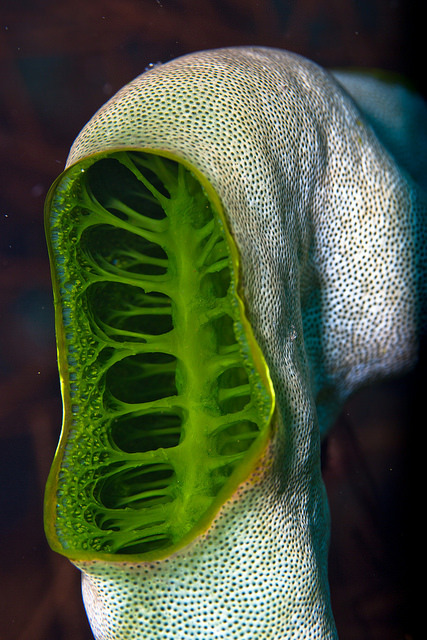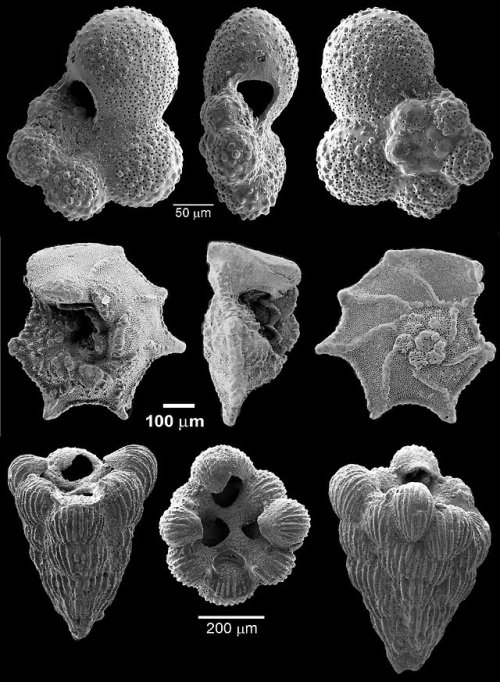It May Be Winter In The Northern Hemisphere, But Down In Antarctica, It’s Currently Summertime. This

It may be winter in the Northern Hemisphere, but down in Antarctica, it’s currently summertime. This humpback whale migrated south to feast on the plentiful krill along the West Antarctic Peninsula.
Credit: © Ari Friedlaender
More Posts from Simplyphytoplankton and Others
Next month will be the one year anniversary of the PACE launch!

Sharpening Our View of Climate Change with the Plankton, Aerosol, Cloud, ocean Ecosystem Satellite
As our planet warms, Earth’s ocean and atmosphere are changing.
Climate change has a lot of impact on the ocean, from sea level rise to marine heat waves to a loss of biodiversity. Meanwhile, greenhouse gases like carbon dioxide continue to warm our atmosphere.
NASA’s upcoming satellite, PACE, is soon to be on the case!
Set to launch on Feb. 6, 2024, the Plankton, Aerosol, Cloud, ocean Ecosystem (PACE) mission will help us better understand the complex systems driving the global changes that come with a warming climate.

Earth’s ocean is becoming greener due to climate change. PACE will see the ocean in more hues than ever before.
While a single phytoplankton typically can’t be seen with the naked eye, communities of trillions of phytoplankton, called blooms, can be seen from space. Blooms often take on a greenish tinge due to the pigments that phytoplankton (similar to plants on land) use to make energy through photosynthesis.
In a 2023 study, scientists found that portions of the ocean had turned greener because there were more chlorophyll-carrying phytoplankton. PACE has a hyperspectral sensor, the Ocean Color Instrument (OCI), that will be able to discern subtle shifts in hue. This will allow scientists to monitor changes in phytoplankton communities and ocean health overall due to climate change.

Phytoplankton play a key role in helping the ocean absorb carbon from the atmosphere. PACE will identify different phytoplankton species from space.
With PACE, scientists will be able to tell what phytoplankton communities are present – from space! Before, this could only be done by analyzing a sample of seawater.
Telling “who’s who” in a phytoplankton bloom is key because different phytoplankton play vastly different roles in aquatic ecosystems. They can fuel the food chain and draw down carbon dioxide from the atmosphere to photosynthesize. Some phytoplankton populations capture carbon as they die and sink to the deep ocean; others release the gas back into the atmosphere as they decay near the surface.
Studying these teeny tiny critters from space will help scientists learn how and where phytoplankton are affected by climate change, and how changes in these communities may affect other creatures and ocean ecosystems.

Climate models are one of our most powerful tools to understand how Earth is changing. PACE data will improve the data these models rely on.
The PACE mission will offer important insights on airborne particles of sea salt, smoke, human-made pollutants, and dust – collectively called aerosols – by observing how they interact with light.
With two instruments called polarimeters, SPEXone and HARP2, PACE will allow scientists to measure the size, composition, and abundance of these microscopic particles in our atmosphere. This information is crucial to figuring out how climate and air quality are changing.
PACE data will help scientists answer key climate questions, like how aerosols affect cloud formation or how ice clouds and liquid clouds differ.
It will also enable scientists to examine one of the trickiest components of climate change to model: how clouds and aerosols interact. Once PACE is operational, scientists can replace the estimates currently used to fill data gaps in climate models with measurements from the new satellite.

With a view of the whole planet every two days, PACE will track both microscopic organisms in the ocean and microscopic particles in the atmosphere. PACE’s unique view will help us learn more about the ways climate change is impacting our planet’s ocean and atmosphere.
Stay up to date on the NASA PACE blog, and make sure to follow us on Tumblr for your regular dose of sPACE!
Fellow Study Abroad Students
Most Common Profile
Fellow Students
My Background
Adjustments
The most common profile in study abroad is students from "elite colleges, white, female, major in arts/humanities, and have highly educated parents." Let's see how that compares to me. I am from a small liberal arts school (does that count as elite?), I am white (check), male (nope), I have majors in biology (nope) and Spanish (check), and both of my parents completed high school but never went to college so they would not be considered highly educated.
Now, compared to my fellow study abroad students, that profile fits a bit more. Girls out number guys by slightly more than 2 to 1, most of us are white, I think there are two science majors max (including myself), we have representatives from American University and other liberal arts schools, and I know at least some of them have parents that are medical doctors or have a doctorate in the arts or humanities. This is my first time outside the United States, but I know that at least five others have spent at least a few weeks outside of the U.S. at some point in their lives. So overall, everyone else is more well-traveled than me.
In general, I usually do not think that my background as a first generation college student affects my interactions with my peers. I think it's a little awkward when someone says that their father is a doctor or that their father has a Ph.D. in Philosophy, but usually, it's just someone that comes up in a casual conversation and they do not expect me to say what my parents do.
I think that I have learned to be independent and I usually do not rely on others when navigating the college system, and I think that is probably also true for learning how to adjust to life abroad. I just need some time and I make the adjustments on my own. I'm sure that the students that have been abroad may be able to adjust easier, but I don't really know if it is that different from my fellow study abroad students.


Silence and calmness can be extremely moving. #Whale #MexicoPelagico #PelagicLife #ocean #nature #whale #underwater #mexico Photo by @rodrigofriscione
What will scientists find in the deep waters off California?
Deep-sea corals and sponges are some of the oldest animals on Earth, living for hundreds of years at depths beyond direct human observation. Coral, sponge, and fish communities thrive in the cold, deep waters off California’s coast, but are rarely – if ever – visited or observed.
In late July and early August, scientists using advanced technology aboard the NOAA Ship Bell M. Shimada will study unexplored seafloor habitats off North-Central California in NOAA’s Greater Farallones and Cordell Bank national marine sanctuaries. Their focus includes coral, sponge, and groundfish communities. What they learn will help inform the management of these special ocean areas, and add to knowledge about deep-sea habitats and the biological communities that live there.

A crinoid and bubblegum coral grow in the deep sea in Cordell Bank National Marine Sanctuary. Photo: OET/NOAA
Using a robot to explore the deep
To survey the seafloor and record images of the habitats as deep as 2,000 feet (600 meters), scientists are using a remotely operated vehicle (ROV), launched from the ship and sent into the depths of the ocean. In addition to sending real-time video and images via a cable connected to the ship, the unmanned ROV will collect geological and biological specimens for identification. Scientists will also conduct seafloor mapping, an important tool for management of marine areas.

A remotely operated vehicle collects a sponge sample. The yellow sponge is a new species that was found on the wreck of the USS Independence. Photo: OET/NOAA
Why journey to the deep?
The deep sea is vastly unknown because it is largely inaccessible by humans. However, it affects us in many ways. A healthy ocean is essential to the health of our planet, and deep-sea communities are an important part of marine ecosystems. The deep sea nurtures fish stocks and hosts life-forms like bacteria and sponges that have contributed to medical discoveries.
Coral and sponge habitats are among the most biodiverse and productive ecosystems throughout the entire ocean. Increasing global human demand for resources has created a need for expanded science and conservation of these deep-ocean ecosystems and the benefits they may yield. Both living and dead corals and sponges are “biogenic habitats,” where the organisms themselves provide habitat for other marine life.
Previous NOAA expeditions off California’s coast have identified several new species of corals and sponges, including Swiftia farallonesica, a slender white coral, in the deep waters of Greater Farallones National Marine Sanctuary, off the Sonoma County coast. New sponge species were discovered living on the wreck of the USS Independence off the San Mateo County coast. They were also discovered in Cordell Bank National Marine Sanctuary, both in Bodega Canyon and on the deep slope near Cordell Bank to the north. New species discoveries indicate that we still have much to learn about the deep sea.
The ocean supports hundreds of billions of dollars of the U.S. economy through food, jobs, transportation, recreation, and other services. NOAA’s mission is “to understand and predict changes in climate, weather, oceans, and coasts, to share that knowledge and information with others, and to conserve and manage coastal and marine ecosystems and resources.” Assessing the conditions of ocean ecosystems can lead to better management of those areas to support the ocean economy.

Swiftia farallonesica is a new species of coral that was discovered in the deep waters of Greater Farallones National Marine Sanctuary. Photo: NOAA
Stay tuned for more pictures and information after the expedition!

These microscopic beauties are foraminifera—single-celled organisms that live in the ocean. Since they make their shell using oxygen from the water, as ocean temperatures fluctuate through time and change the type of oxygen in the water the shells’ structure also changes. Paleontologists like the Smithsonian’s very own Brian Huber can use fossil foraminifera to track changes in Earth’s climate from over 540 million years ago.

A shark on a reef is a definite sign that the reef is healthy! Years ago people were terrified if the saw a shark, now were horrified that we may not see sharks on the reef or anywhere, because we have killed over 90% in the last 50 years. We must end to this needless slaughter! Sharks are essential to keeping our oceans healthy and in balance! The oceans are the heart of our planet! Over 50% of the air we breath and 70% of the protein we eat comes from the ocean. Without our the ocean all life on this planet will die. Please be the change the world needs to survive!
Best immediate way to save sharks here in the US…Support Oceanas Shark Fin Trade Ban! Please sign, share the petition and support this effort! https://www.change.org/p/congress-ban-the-trade-of-shark-fins-in-the-u-s - #regrann (at Tiger Beach)








Marine Life of the Maritime Provinces, Canada
After months of work and waiting, here is at long last the full MARS commission. MARS (Marine Animal Response Society) is active in the Maritime Provinces of Canada, and is called upon whenever a marine creature is found dead or in distress. These illustrations will be used to educate their volunteers and assist in making species identifications during strandings or at sea.
With 42 separate illustrations, this is my largest project to date - quite a load of work! But it was an absolute pleasure to do. I got to paint animals I have never painted before, as well as revisit some old friends. The diversity of species found in this one area is impressive and made for varied painting.
I’m pretty pleased seeing them all together like this, and I hope you’ll enjoy them too!
Why Octopuses Could Never Disappoint
These cephalopods, who telegraph their moods by color changes and solve problems by using tools, have surprised me again and again.
And now it’s happened again. An octopus has astonished me.
This time, it’s a common octopus caught on camera in South African waters by a dive team for the documentary Blue Planet II, currently airing on BBC America in the United States.
The action is dramatic. A pyjama shark seizes the octopus. Just as the situation begins to look dire, the octopus stuffs the shark’s gills shut using its sinuous arms, making it impossible for the shark to breathe — until the shark releases it.

This seems like something everyone should know if they’re in the sciences and/or interested in reading scientific papers.
-
 tha101 liked this · 4 years ago
tha101 liked this · 4 years ago -
 ge-h-stoert-hoch-zehn reblogged this · 6 years ago
ge-h-stoert-hoch-zehn reblogged this · 6 years ago -
 pollyjean liked this · 6 years ago
pollyjean liked this · 6 years ago -
 wild-oceans reblogged this · 6 years ago
wild-oceans reblogged this · 6 years ago -
 higher-than-aegis-7 liked this · 6 years ago
higher-than-aegis-7 liked this · 6 years ago -
 thekimdelacreme reblogged this · 7 years ago
thekimdelacreme reblogged this · 7 years ago -
 animaliae reblogged this · 7 years ago
animaliae reblogged this · 7 years ago -
 bubbasporkchop reblogged this · 7 years ago
bubbasporkchop reblogged this · 7 years ago -
 warm-summerdays-indoors reblogged this · 7 years ago
warm-summerdays-indoors reblogged this · 7 years ago -
 wallsandsound reblogged this · 7 years ago
wallsandsound reblogged this · 7 years ago -
 sinnephi liked this · 7 years ago
sinnephi liked this · 7 years ago -
 oncexinxmyxdreams reblogged this · 7 years ago
oncexinxmyxdreams reblogged this · 7 years ago -
 zrpants liked this · 7 years ago
zrpants liked this · 7 years ago -
 spiralx liked this · 7 years ago
spiralx liked this · 7 years ago -
 funsizeuniverse reblogged this · 7 years ago
funsizeuniverse reblogged this · 7 years ago -
 grumpyoldsnake liked this · 7 years ago
grumpyoldsnake liked this · 7 years ago -
 distantbleating reblogged this · 7 years ago
distantbleating reblogged this · 7 years ago -
 transport-phenomena reblogged this · 7 years ago
transport-phenomena reblogged this · 7 years ago -
 mushroom--soup reblogged this · 7 years ago
mushroom--soup reblogged this · 7 years ago -
 brakespeare reblogged this · 7 years ago
brakespeare reblogged this · 7 years ago -
 brakespeare liked this · 7 years ago
brakespeare liked this · 7 years ago -
 gloriouspurpose liked this · 7 years ago
gloriouspurpose liked this · 7 years ago -
 queerpyracy reblogged this · 7 years ago
queerpyracy reblogged this · 7 years ago -
 redefine2d reblogged this · 7 years ago
redefine2d reblogged this · 7 years ago -
 irisplayground reblogged this · 7 years ago
irisplayground reblogged this · 7 years ago -
 mushroom--soup reblogged this · 7 years ago
mushroom--soup reblogged this · 7 years ago -
 mushroom--soup liked this · 7 years ago
mushroom--soup liked this · 7 years ago -
 chryso-poeia liked this · 7 years ago
chryso-poeia liked this · 7 years ago -
 mclean-shine reblogged this · 7 years ago
mclean-shine reblogged this · 7 years ago -
 mclean-shine liked this · 7 years ago
mclean-shine liked this · 7 years ago -
 monkeydmarie reblogged this · 7 years ago
monkeydmarie reblogged this · 7 years ago -
 hydrias liked this · 7 years ago
hydrias liked this · 7 years ago -
 bitch-dont-krill-my-vibe reblogged this · 7 years ago
bitch-dont-krill-my-vibe reblogged this · 7 years ago -
 samsam24 liked this · 7 years ago
samsam24 liked this · 7 years ago -
 mirandaclass liked this · 7 years ago
mirandaclass liked this · 7 years ago -
 weareourowndevils reblogged this · 7 years ago
weareourowndevils reblogged this · 7 years ago -
 weareourowndevils liked this · 7 years ago
weareourowndevils liked this · 7 years ago -
 artfromthefuture reblogged this · 7 years ago
artfromthefuture reblogged this · 7 years ago -
 jesperf reblogged this · 7 years ago
jesperf reblogged this · 7 years ago -
 -aviarius- liked this · 7 years ago
-aviarius- liked this · 7 years ago -
 lavenderspiritart reblogged this · 7 years ago
lavenderspiritart reblogged this · 7 years ago -
 lavenderspiritart liked this · 7 years ago
lavenderspiritart liked this · 7 years ago

Blog dedicted to phytoplankton. Phytoplankton are microscopic organisms that are responsible for half of the photosynthesis that occurs on Earth. Oh, and they look like art... Follow to learn more about these amazing litter critters! Caution: Will share other ocean science posts!Run by an oceanographer and phytoplankton expert. Currently a postdoctoral researcher.Profile image: False Colored SEM image of Emiliania huxleyi, a coccolithophore, and the subject of my doctoral work. Credit: Steve Gschmeissner/ Science Photo Library/ Getty ImagesHeader image: Satellite image of a phytoplankton bloom off the Alaskan Coast, in the Chukchi SeaCredit: NASA image by Norman Kuring/NASA's Ocean Color Web https://earthobservatory.nasa.gov/images/92412/churning-in-the-chukchi-sea
158 posts